P Ō 'AI PILI
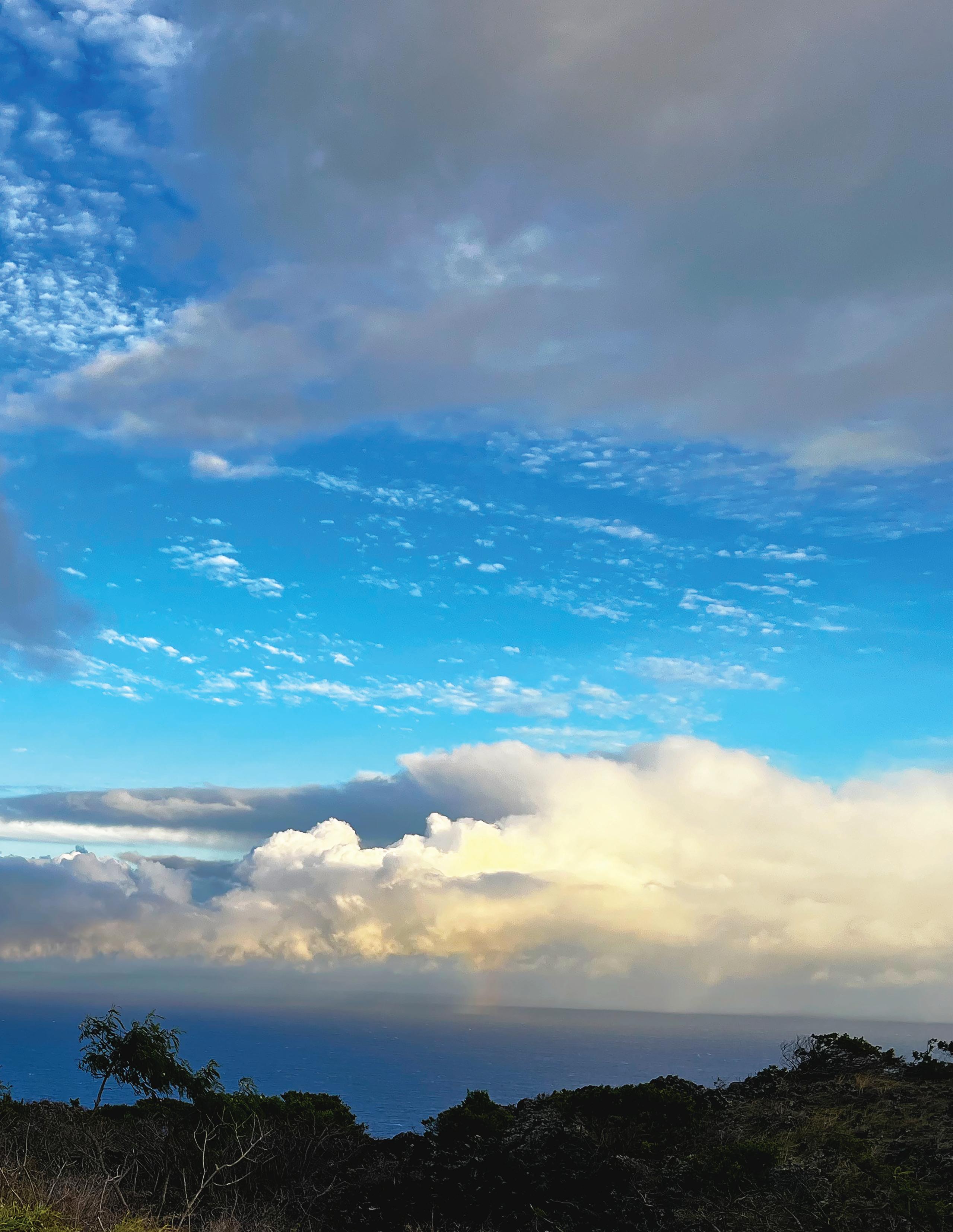



Publisher: Kaupō Community Association, Inc.; Editor: Kamalama Mick; Copy EditorS: Tama Starr, Georgia Pinsky; Editor’s Assistant: Kauwila Hanchett; Graphic Designers: Kauwila Hanchett & Kamalama Mick; Contributors: Makalapua Kanuha, Kaupō Community Association, Inc. (KCAI), Andrew Walmisley, Jonathan Starr, Hāna Business

Scott
PŌ‘AI PILI SOLICITATION FOR CONTENT: If you have a story, letter, photograph, announcement, or article you’d like to see published in a future issue of Pō‘ai Pili, we’d love to hear from you! Content is due one month prior to our distribution date. For our next issue, please send submissions to poaipili@gmail.com no later than June 1, 2022.

The views and opinions expressed in this newsletter are those of the authors and contributors of the various articles, and do not necessarily reflect the official policy or position of KCAI, or the opinions of KCAI’s individual board members. All content is meant to be positive and is not intended to malign any religion, ethnic group, club, organization, company, or individual.

Kaupō Community







 6. Nu‘u: Treasured ‘Āina of the Maui Ali‘i Nui
6. Nu‘u: Treasured ‘Āina of the Maui Ali‘i Nui
Aloha Community,
Happy spring! Spring is a time of change, when everything is blooming and growing, unfolding after winter. Spring is the season when the earth begins to warm, but the heat of summer has not yet begun. Spring is the season of hope. Many of us have lost loved ones recently; let us remember that their presence lingers forever in our hearts and memories—adorning us like a fragrant lei. They are watching over us still. Their presence is carried in our hearts and in the beauty surrounding us.
There is an East Maui rain called Uahānaipua—the rain that nurtures the blossoms. This spring, be nurtured by this beauty, and don’t be afraid to try something new! Step past your boundaries and you might surprise yourself. Just like the flowers, let yourself bloom.

I am proud to introduce the second issue of Pō‘ai Pili, the Kaupō Community Newsletter! The main focus of this issue is Nu‘u, one of Kaupō’s wahi pana, and the unseen history contained there. Other than this, you will find the usual things—updates on the community, announcements from residents, and much more.

Until next time!
Kamalama Mick
Pō‘ai Pili EditorThis spring, be nurtured by the beauty around us and don’t be afraid to try something new. Step past your boundaries...let yourself bloom.Kamalama Mick lives in Kaupō and is the editor of Pō‘ai Pili—the Kaupō Community Newsletter. She is the daughter of Kauwila Hanchett and Adam Kahualaulani Mick and the granddaughter of Mike and Carla Hanchett. In her spare time, she enjoys writing, art, and photography. Contact her at poaipili@gmail.com.
ALOHA MAI KĀKOU!
Wahi pana.
Kaupō is our special place, it is our Wahi pana. Many of our kūpuna perpetuated stories of their Aloha for Kaupō through mele (song) and mo‘olelo (story). Today, we have that same opportunity to carry on that Kuleana (responsibility) to Mālama (care for) our Kaupō with Aloha.
Me ka nani a‘o Kaupō, the beauty of Kaupō! That beauty is a reflection of our community. To the ‘ohana who have been in Kaupō for many generations, Mahalo (Thank you) and to those who chose to make Kaupō their home, Welina (Welcome)!


Over the years, our community shared a common goal and agreed it was vital for our Kaupō community to have a place to gather. This place would give our community the opportunity to celebrate and perpetuate the history, traditions, and stories of Kaupō! Through many shared ideas, healthy conversations, and opportunities, the idea of restoring the old Kaupō School was born!
It took the resilience of our Kaupō community to be steadfast and to keep our best feet forward as we navigated through years on this Wa‘a, together! Today, Kaupō Community Resource Center is a reality!
Although this journey took years, I am proud to inform our community that soon, we will celebrate the “Grand Opening” of our Kaupō Community Resource Center.
Let us continue to live the spirit of Aloha for Kaupō, the way our kūpuna loved Kaupō!
‘O wau me ka ha‘aha‘a,
 Makalapua Kanuha President, Kaupō Community Association, Inc.
Makalapua Kanuha President, Kaupō Community Association, Inc.
It took the resilience of our Kaupō community to be steadfast...as we navigated through years on this Wa‘a, together!
Contributed By: Kaupō Community Association, Inc.
Encoded in the ‘āina and kānaka of Kaupō we find ancestral pathways of pono (right and natural order) and abundance. In traditional mo‘olelo, the sacred relationship between the earth and humanity is a profound and constant theme that weaves throughout the tapestry of life and across generations.
As the Kaupō community seeks to reclaim our rightful roles— as stewards of Kaupō’s ‘āina; caretakers of kūpuna, mo‘olelo, and ‘ohana; and navigators of our future—we root our efforts to these generational pathways. We embrace our collective capacity to care for these lands and for one another.
How then do we surface the abundance that is already here in seed form awaiting the right conditions to kupu (sprout, grow)?
Kumu John Kaimikaua, a revered kumu hula associated with Moloka‘i, shared much ‘ike during his lifetime
that continues to guide Hawai‘i today. One of the ancient chants he shared spoke of a time when “ho‘ale ka lepo popolo,” the dark earth would rise up like a wave, meaning indigenous people and ways of being would rise to heal generations of environmental disregard.
A similar message is heard in a Hawaiian prophecy: E iho ana o luna, E pi‘i ana o lalo, E hui ana nā moku, E kū ana ka paia.
That which is above shall descend, that which is below shall rise, the islands shall be united and the walls shall stand.
Kumu John spoke at length on pono and the pooling of collective human intent. When we are of one na‘au, one mind, and one heart—a community in harmony with each other and the pono of this place— we become unstoppable, like a wave.
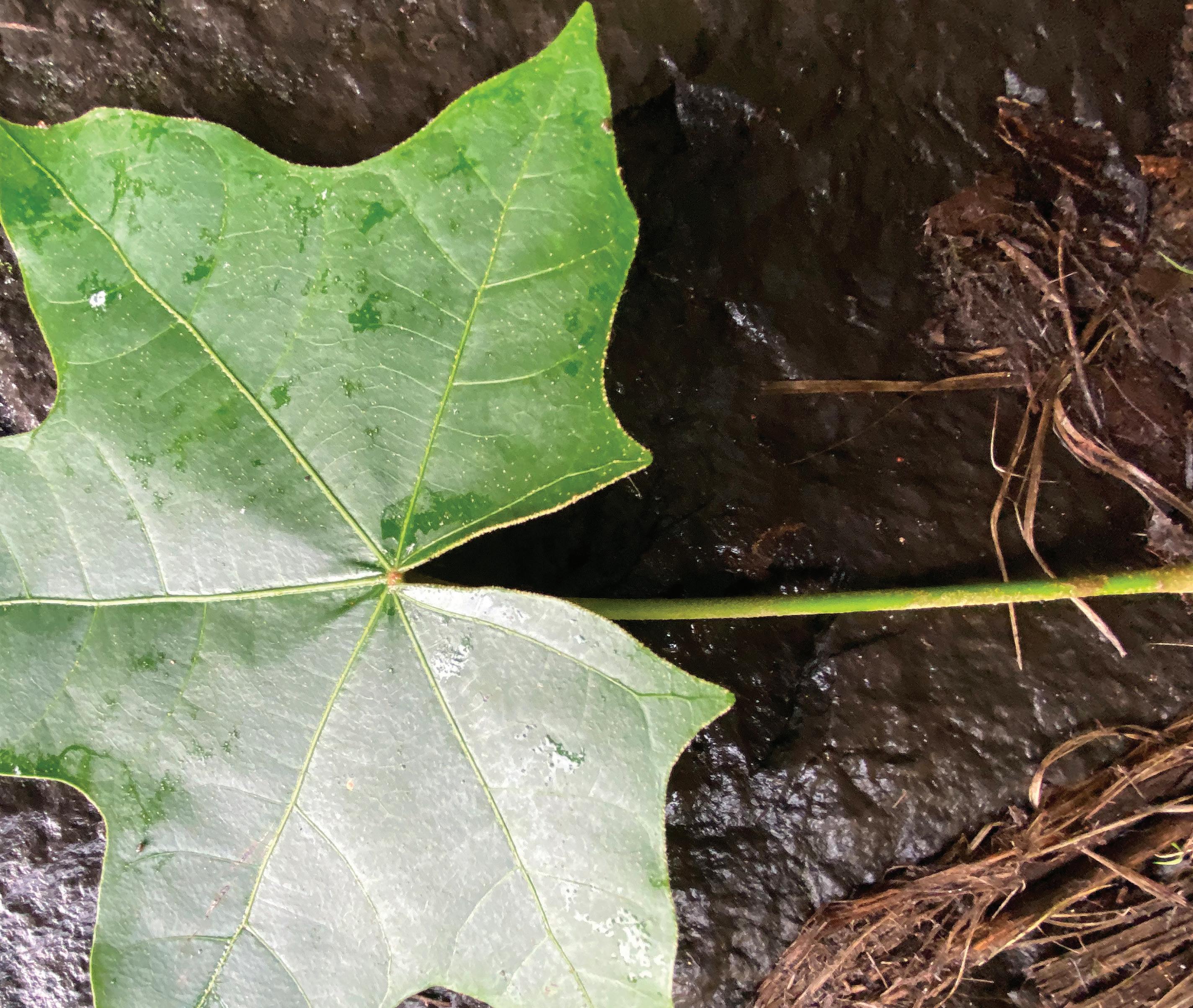
How do we remember together the pono of Kaupō and pool our individual intentions and mana into a whole that is greater than its parts?
As a step toward these goals, the Kaupō Community Association, Inc. (KCAI) will be convening a series of gatherings to explore together the things that matter most to our community. At the KCAI community meeting in April 2022, those gathered identified the list below as core topics for deeper dialogue.
Gatherings will be open to all Kaupō community members and may include other stakeholders as appropriate.
Additionally, KCAI will be reaching out to ‘ohana to conduct one on one interviews with families who would like to share more about their hopes for Kaupō’s future.
Community dialogues and ‘ohana talk story sessions are supported by KCAI’s Kūhohonu initiative.
Topics for Community Dialogue
Wai/Water
Food Sharing/Sovereignty
Protecting Natural Resources
Emergency Response/Readiness
Caring for Kaupō’s History/Mo‘olelo
Illegal Hunting & Community Safety Road (Dust Impact on Residents)
Economic Resiliency
‘Āina—Stewardship/Ownership
Social Infrastructure & Communication
Community/Cultural Knowledge Sharing
Protecting our Rural Lifestyle

Nuʻu is a wahi pana with a rich and stunning history. Though usually regarded as an ahupua‘a of Kaupō, it may actually have once been a collection of ahupua‘a known as an ‘okana.
Old maps of Kaupō show land division names in Nuʻu that appear to function like traditional ahupua‘a: Puukalaneo, Kailili, Hupuaa, Hawelewele, etc.
The fine canoe landing on Nu‘u Bay and the loko i‘a (fish pond) just back of the shore provided the ideal conditions for the development of the location as a royal center similar to the famous centers on Hawaiʻi Island in Kona and Kohala.
Nuʻu may have “bookended” the chiefly center at Mokulau, demonstrated by numerous heiau (including at least two luakini) near the shore and running in a line up Haleakalā, the fine collection of kiʻi pohaku (petroglyphs), often associated with chiefly centers, and oral traditions that associate it with Aliʻi Nui Kekaulike.
In 1922, an old kamaʻāina, Kenui, told Thomas Maunupau, who accompanied archaeologist Kenneth Emory to Kaupō in 1922, that Kekaulike had a residence at Nuʻu, where “he was living with his people to farm and fish.”
While the king was out fishing, his estranged brother, Kaaoao, came down from Haleakalā and recklessly pulled up Kekaulike’s

crops, resulting in a battle that ended in the brother’s death. The tradition that Kekaulike’s sacred nīʻaupiʻo son, Kamehamehanui, was born in “Nuʻu mauka” in 1706 also suggests that the aliʻi nui had a strong association with this ‘okana (or ahupuaʻa).
The loko iʻa had historic associations with the aliʻi like similar fishponds across the channel on Hawaiʻi Island. It likely played a role in the economy of Kekaulike’s famed aloaliʻi (court) at Mokulau and may have been one factor in choosing Kaupō as his capital in the 18th century. The aliʻi prized the ʻamaʻama and awa harvested from them and had the live fish carried great distances by runners.
Photo Credit: Jonathan Starr 7 Continued on Page 9
Continued from Page 7
Kenui’s granddaughter, Caroline, born at Nuʻu in 1892, recollected to Mary Kawena in 1960 that the pond, bordered by a hau grove, “was used by the aliʻi in prior times and had ʻopae and a big moʻo (dragon goddess), that took a little boy and kept him in a cave for a week. She herself was nearly taken by the moʻo named Mākila.”
Kenui called the loko iʻa “Pupuka,” which means “ugly,” employing a Hawaiian poetic device of expressing superlatives by using opposites. It was, perhaps, the locals’ way of expressing their deep love for this valued resource.
Kupuna Josephine Marciel called the pond Nuʻukalalawai (lālāwai means “prosperous”), which may also refer to its association with the high chiefs of Kaupō.
She was able to recall that “a person named Kala took care of the fishpond of the aliʻi at Nuʻu.” Just mauka of the small spring that feeds the loko iʻa there is a small house platform, which may have been the site of the kahu Kala’s home.
Nuʻu was treasured by Kekaulike’s descendants. Kekaulike’s hānai sons were the kapu twins, Kamanawa and Kameʻeiamoku and Kamanawa’s grandson, Kaleimoku, was awarded Nuʻu at the Māhele of 1848. Nu‘u may have been a gift to Kamanawa as a reward for his loyalty to Kamehemeha when he conquered Maui in 1795. Kaleimoku chose to relinquish twelve of the thirteen important ʻāina he possessed in favor of Nu‘u.
In 1922, Maunapau reported that Nuʻu maka’āinana still remembered Kaleimoku: “Albert Kapaeko said that it was the chief Keliʻiahonui, hoahānau of Kaleimoku, who built the road of water-smoothed stones of Nu‘u. Fishing is what this chief did when staying here, so he made a path from the canoe landing to his house.”
That beautifully preserved road, actually a portion of the 16th century “Piʻilani Highway,” can be seen today between Nuʻu landing and Waiū. Keliʻiahonui was also descended from Kekaulike and was briefly married to Aliʻi Nui Kaʻahumanu.
Kaleimoku was hoahānau of Kaʻahumanu, and lived at the royal court at Lahaina. He married Nohea, granddaughter of the famed Naeʻole who saved the infant future King Kamehameha from danger. After his death, Nuʻu eventually passed down to King Kalākaua, in whose estate it remained until the western portion was purchased in 1892 by James Campbell and the eastern by Antone Marciel, founder of Kaupō Ranch, in 1906. Kalākaua may have inherited Nuʻu through his descent from Kameʻeiamoku.
Paulo Kū was konohiki of the lands of Nuʻu before and after the Māhele. According to his illustrious son, Elia Helekūnihi (1839-1896), future teacher, pastor, lawyer, judge and twice member of the Kingdom of Hawaiʻi Legislature (1876 and 1887), the family kauhale was on the east side of Huakini Bay at the far western end of Nuʻu.
The ʻohana claimed descent from Aliʻi Nui Kekaulike, and Kū was said to have been born in a great canoe of King Kamehameha’s famed “Peleleu Fleet” for the conquest of Kauaʻi off O‘ahu near the end of the year 1803.
Kū’s father, Kanaulo, and mother, Mahoemakakau, joined the fleet in Kaupō. Mahoemakakau’s name, which can mean “twin with a fixed or steady eye,” is perhaps a reference to Kamanawa and his twin, Kameʻeiamoku.
Kū and Paul Nahaoleluaa, hānai uncle of Queen Emma and for thirty years beloved governor of Maui, were among the cadre of kaukaualiʻi in the extended ʻohana of Kaʻahumanu sent out to all the districts of Hawaiʻi to establish schools and Christianize the makaʻāinana.
Nāhaolelua was said to be the son or grandson of Kameʻeiamoku, Kamanawa’s twin, which accounts for his connection with Nuʻu. We are told that Kū was for a long time “leader of the church at Nuʻu,” his brother, Solomona Aki, was teacher at Nuʻu and their sister, Helekūnihi, married Nahaolelua.
Without missionary assistance, these early Hawaiian converts by 1827 had established a school and Protestant church mauka of the loko iʻa and by 1840, a total of two churches and nine schools in Kaupō with 550 children. Aki’s schools at Nuʻu and Waiū alone had a whopping 110 children!
To be continued in the next issue...
The doctoral work of Andrew Walmisley explored nineteenth century Maui colonial history through the lens of the life of one Hawaiian man, Elia Helekūnihi (1839-1896), who was born at Nuʻu, Kaupō, into a lesser aliʻi family in the lineage of King Kekaulike. Helekūnihi was a key player in the major events that defined his people as they struggled to find their way through the painful challenges of that century: depopulation, disease, and loss of sovereignty.
Andrew Walmisley received his doctorate in Hawaiian History from the University of Birmingham in the U.K. He is currently doing research for a comprehensive history of Maui.

 By Georgia Pinsky
By Georgia Pinsky
My name is Georgia Pinsky, and I would like to share with you about the Maui Family Farmer Training Network.

We offer Farm Support Services, Farmer Navigational Coaching, and online educational sessions. We are currently founding a Tool Library for shared tool use among small Maui farmers.
Navigational Coaching from the Maui Family Farmer Training Network will provide you the focused time, support, and guidance you need to move forward with your Maui Farming Goals. We have the connections in the industry and the knowhow, and we’re here to help you make it happen. Coaching is offered primarily by Dr. Phyllis Robinson and myself, and we bring in additional coaches to meet specific needs of our participants.
Funding for Navigational Farmer Coaching is provided in part by the County of Maui Office of Economic Development. This funding is designated for permanent Maui farmers. Farmer Coaching is available to all aspiring farmers at an hourly rate, even if you don’t meet the requirements for the funding from the County of Maui. Additional funding provided by Atherton Family Foundation, and the Savitt Family Foundation.
Maui Family Farmer Training Network is a membership-based organization. We have a “Name Your Price” membership fee with two levels of participation. It

includes all MFFTN programming —Navigational Coaching, Tool Library Membership, Online Educational Sessions—and invites to Person-to-Person Networking Events (as allowed by COVID-19 guidelines).
We recommend $200, $250, $300 or more. It’s up to each Farmer to determine the exact amount that’s right for their farm.
Your membership fee is not tax deductible, but it is a deductible Farm Business Expense. We offer scholarships for membership to those who need support, so please ask if you feel the need. Please visit mauifarmernetwork.com or email me directly at mauifamilyfarmer@ gmail.com to become a member.
Georgia Pinsky is committed to improving our local access to good, clean food. She is focused on working with and for organizations that are working to improve our community, and our planet. She is reliable, enthusiastic, and motivated. She holds a BA from UH Hilo, and she was born, raised, and homeschooled K-12 here on Maui. She will help connect you to the resources you need to meet your goals. Her Coaching is focused on you and YOUR FARM and she can connect you with resources to help you make your farm vision a reality.
Dr. Phyllis
Robinson holds a doctorate in adult education and has taught agriculturerelated courses in both the credit and non-credit side of UHMaui College. As the co-founder and six-year program-director of the Farm Apprentice Mentoring (FAM) Program, she brings the experience of 43 years of organizational development and 15 years managing the educational needs of our farmers and businesses in climate change, regenerative agriculture and food production in Maui County.

Resilience Hubs are community-serving facilities (often existing sites) augmented to support residents, coordinate communication, distribute resources, and enhance quality of life. They are intended to be locations that serve the community year-round while also being able to act as nodes of support during disruptions and in recovery. Resilience Hubs are typically best set up in a trusted physical space such as a community center, recreation facility, or multi-family housing building and have connection with other community spaces such as parks or gardens.
In November 2021 the HBC converted its organizational structure to become a non-profit and has now officially received the IRS designation of 501(c) (3) status, which has been a goal set by the organization for the last several years. With this designation, memberships, donations, and all other transactions which support our mission are tax deductible dating from when our conversion was granted by the state in November 2021.
The Hana Business Council was established in 1997 with the mission of supporting business endeavors and creating business and employment opportunities within the special culture and traditions of aloha, for the health and welfare of our East Maui area.


We are excited to begin this new season in 2022 with a revitalization of the HBC Strategic Plan in accordance with the new vision statement:
To cultivate business prosperity with the skill sets provided through guidance from the
unique traditional and cultural practices from the Hāna area in the spirit of aloha.
Guiding, strengthening, and improving entrepreneurial and business success with:
• Innovation
• Learning
• Ethics
• Network of Available Resources
We encourage participation for entrepreneurs, nonprofits, and businesses supporting East Maui. Join our organization and be featured in the HBC-supported HanaMaui.com website, events calendar, and directory—the portal to East Maui! HBC meetings are listed on the calendar and occur eight times a year for general members on the 2nd Tuesday of each month at 4:30 – 6:00 pm. The next meeting for interested participants and members will be on May 10, 2022. Please visit HanaMaui.com or contact hbc@ hanabusinesscouncil.com for additional information.
Malama pono, Dawn Lono, HBC President & Heidi Lea, HBC Treasurer
Maui County is working to establish Resilience Hubs in communities throughout the island. As part of this process, Maui has brought the leading expert in Resilience Hubs to Maui to support a collaborative process for designing and supporting Resilience Hubs. In April, Kristin Baja, the USDN’s Director of Direct Support and Innovation, spent three weeks in Maui working with community leaders and community members to structure their needs, ideas, and desires for Resilience Hubs in a way that ensures they can be implemented. This was an opportunity to ensure that our community’s vision and desires drive what the Hub will do and support in our community.
On April 25, 2022, a handful of Kaupō residents met at the Kaupō Community Resource Center to talk story with Baja about our community’s needs and existing resources. For those who were unable to attend but would still like to share ideas, concerns, or thoughts regarding Kaupō’s resiliency hub needs, please email Baja at bajak10@gmail. com.
Kristin Baja (“Baja”) is USDN’s Director of Direct Support & Innovation. Baja is responsible for identifying, leading, and supporting innovative projects and trainings that actively transform local government processes and lead to proactive respect-based change. She actively works to identify and compost archaic and discriminatory practices and to provide pathways for change rooted in courage, equity, and justice. Baja is the originator of Resilience Hubs and wrote the white paper, guidance manual and operations manual for Resilience Hubs as well as set up the Resilience Hub website and community of practice. Currently she supports implementation of over 50 Resilience Hubs around North America.
Prior to USDN, Baja served as the Climate and Resilience Planner with the City of Baltimore where she led the city’s climate and equity work. She holds a Masters of Urban Planning and a Masters of Science from the University of Michigan and is actively working on a Masters in Biomimicry from Arizona State University. In 2016, she was recognized by the Obama Administration as a Champion of Change for her work on climate and equity. To learn more about resiliency hubs, check out: http:// resilience-hub.org/.
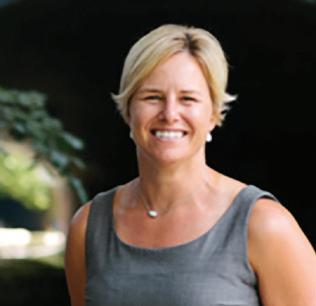
Did you know that there’s a secret “language of herbs and flowers”?
Herbs were sent in the form of small bouquets to reveal sentiments of love, feelings, and well wishes to the recipient.
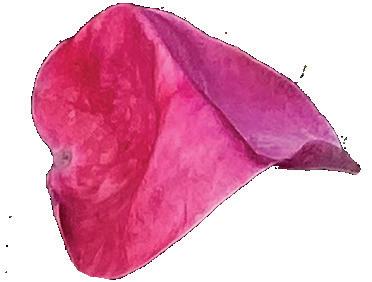
Small bouquets called “tussie mussies” had been exchanged since the 1400s. In fact, entire dictionaries were devoted to decoding the delicate disclosures.
Handbooks were published that detailed the interpretation of herbs and flowers exchanged as “blooming expressions” and “talking bouquets.”
Why not dive into this wonderful journey of the “Green Nations” with a cup of relaxing tea, and send a small bouquet to a loved one or a friend in need?
Relaxing tea recipe: Rose (love), Chamomile (patience) & Lavender (devotion)


Boil water, and use 2 cups of water to 1 tsp. of dried herb mixture. Cover and steep herbal concoction for at least 5 minutes. Enjoy!
In Good Medicine, Teresa
WatersHere are just a few common herbs and their meanings…
Aloe: Affection
Basil: Good wishes
Chamomile: Patience
Fennel: Flattery

Fern: Sincerity
Jasmine, white: Sweet love
Lavender: Devotion, virtue
Lemon balm: Sympathy
Marjoram: Joy and happiness
Mint: Virtue
Rose, red: Love, desire
Rosemary: Remembrance
Sage: wisdom
Thyme: courage
Valerian: Readiness
There is a language, little known, Lovers claim it as their own. Its symbols smile upon the land, Wrought by nature’s wondrous hand; And in their silent beauty speak, Of life and joy, to those who seek
For Love Divine and sunny hours
In the language of the flowers.
From “The Language of Flowers” © 1913 F.L.W. A dictionary interpreting the hidden meanings of herbs & flowers. Written for the author’s wife on their 50th wedding anniversary.
TERESA WATERS
Teresa moved to beautiful Maui in 1987 and has been a full time resident in Kaupō since 2016. She has three daughters and one grandson. She is blessed to be a mother and tutu. Many people know her from Lahaina Animal Farm and Petting Zoo that she started in 2006. She loves working with animals and herbs.

We’ve all seen the tour buses on the winding Kaupō Road. One in particular stood out to my eye—emblazoned on the side was the phrase “Hāna and Beyond!”
The Beyond, of course, is Kaupō—an uncharted land of ancient walls and house sites; dirt roads and bent mailboxes; fields and windswept trees and the rare house tucked in among the foliage.
Some might be surprised to discover that yes, people do live in the Beyond. That’s us—the Kaupō Community.
Many of us are descended from Kaupō’s original Kūpuna. Some may have ancient roots here. Others perhaps moved here and fell in love with the ‘āina. We all love this place and feel a connection to it.

We may not possess great numbers, but we stick together through thick and through thin. We have to, really.

It’s not a particularly easy life in the wild lands of Kaupō. Miles away from Maui’s urban centers, people have to either grow their own food or make trips to town to stock up. It’s hard to get supplies and even harder to get help when it’s needed.
There may be logical reasons, of course. Perhaps it would
cost too much or be too much trouble to move out closer to regular “civilization.”
But the main reason we stay is this. Kaupō is our home. Many of us are descended from Kaupō’s original Kūpuna. Some may have ancient roots here. Others perhaps moved here and fell in love with the ‘āina. We all love this place and feel a connection to it.
The others can only pass through it, but we live in the Beyond!
He kanikau aloha nou e Poliokeawe e, Kuu kaikuaana mai ka po loloa o ka hooilo, Mai ke kula pili holu o Niniau i ka makani, Kuu kaikuaana mai ka malu ulu o Pohoula, Kuuhoa o ka malu hala o Kumunui e, Mai ka la kukanono o Mokulau la, Kuu kaikuaana mai ka malu kukui o Manawainui e, Mai ka ua lu lehua o Haili la, He haili he aloha ia oe e ke kaikuaana e, Kuu hoa mai ka makani lauwili o Kumunui
A farewell poem for you, Poliokeawe, My sister of the long nights of winter, From Niniau’s fields of pili grass rippling in the wind, My sister of the shady breadfruit trees of Pohoula, My companion of the shade of the pandanus trees at Kumunui, In the sweltering sun of Mokulau, My sister of the leafy kukui trees of Manawainui, Of the rain of Haili that scatters lehua flowers, A remembrance of love for you, sister, My companion of the whirling winds of Kumunui
Mireta Kaia for her sister Poliokeawe, Ka Hoku O Ka Pakipika, Oct. 10, 1862
Kuu kane mai ka wai huihui o Punahoa

Mai ke kai nehe i ka iliili o Mokulau
Aloha ia wahi a kaua e noho ai
Kuu kane mai kanahele laau loloa o Ahulili
My husband of the cold waters of Punahoa
Of the sea rustling the pebbles at Mokulau
Beloved is this place where we lived
My husband of the towering forest at Ahulili
Kahinu Kahale for her husband Hosea Kahele, Ko Hawaii Pae Aina, Aug. 20, 1881
In ancient Hawaii, grieving death was a public affair. Mourners would often compose and recite chants to show grief.
With Westerners came a new means of communication in writing, as well as a tool to rapidly spread writing among the general public in the form of newspapers.
Over time, Hawaiians adopted these new technologies of writing and newspapers and produced eloquent obituaries for those who had gone on “ke ala hoi ole mai,” or the road of no return, and a constant theme of these obituaries is the love of the land.

The first Hawaiian language newspapers were published in the 1830s as missionaryrun publications, but obituaries did not start appearing until decades later with the rise of independent newspapers.
Once obituaries began, they became a staple of Hawaiian newspapers from the 1850s until the last of these newspapers closed shop nearly a century later.
During this period, Kaupō was densely populated with an educated public, with schools at Mokulau, Puuomaiai and Nuu. Because of this, many obituaries for Kaupō residents appeared in the newspapers.
The style of obituaries was not static. The format changed over the years. What started as brief death notices in the 1850s gave way to lengthy poems of lament called kanikau that were popular until the end of the 1800s. In the early 1900s, the biographical style of obituary common today replaced the traditional kanikau.
But though the styles of obituaries evolved over time, the affection for the land is ever present.
In 1856, Ka Hae Hawaii began publication as a government-run newspaper to promote readership among native Hawaiians.
Ka Hae Hawaii began printing death notices and other vital statistics (births and marriages) in 1857, and the first death notice including Kaupō residents was published on July 1 of that year.
In the 1860s, independent papers emerged that were not church or government
mouthpieces. These papers, such as Ka Nupepa Kuokoa and Ka Hoku o ka Pakipika, also printed death notices. For unknown reasons, newspapers stopped publishing death notices and other vital statistics by the end of the 1860s; the last death notice for Kaupō residents appeared in Ka Nupepa Kuokoa in September 1869.
From 1857 to 1869, approximately 30 death notices mentioned Kaupō residents. Although brief, the format did expand slightly over time to include additional information apart from the date/name/ gender/age of the initial notices. One such addition was the inclusion of the specific location in Kaupō that the deceased had resided.
Kanikau, poems in honor of the deceased, were already an established feature of Hawaiian culture when Westerners arrived in the late 1700s. However, kanikau did not appear in papers until the 1860s when Hawaiian papers began publishing cultural material in addition to religious articles.
There are about 20 known kanikau that mention Kaupō, spanning from 1862 until 1899. The majority were printed in the 1860s.
Kanikau are full of dense imagery. The writer lovingly recalls the places visited with the deceased and describes these places with descriptive phrases.
From the 1850s to the 1930s, Hawaiianlanguage newspapers presented heartfelt obituaries in formats that changed over time. Simple death notices gave way to traditional poems called kanikau. Finally, biographies replaced kanikau.
Throughout the changing styles, writers expressed a palpable affection for the landscape of Kaupō.
Moving to kanikau, the poems describe areas with sensory-rich details. We can see the grass rippling in the wind at Niniau, feel the sun beating down at Mokulau, and taste the spring water at Waiu.

Finally, biographical obituaries address the land as a living being that must be told that one of its guests would no longer be visiting.
Aldei Kawika Gregoire is the grandson of Sam and Pauline Gregoire of Kaupō, Maui. Throughout his childhood he spent weekends in Kaupō developing a deep connection to place. He has combined his passion for Kaupō’s physical landscape and its associated stories with his interest in photojournalism. His website—www.kaupomaui.com—showcases an invaluable collection of Kaupō’s stories, photographs, place names, culture, and history. Please note that diacritical markings (‘okina and kahakō) have been omitted to remain consistent with original sources.
For 46 years Manny Domen has been in Kaupō clearing the land, building rock walls, planting trees and gardens, and caring for his five children along with additional nieces and nephews, numerous hānai kids, and people of all ages.

For all these years he has assisted his wife Linda in running the Kaupō General Store, plus working part time landscaping in Kīpahulu.
Manny was known as a funny guy. He had a great sense of humor and loved to make people laugh, make
up original jokes, and have fun with word play and rhyming things.
He was not interested at all in what to wear or how he looked. He knew it was the hidden man of the heart that was of value. He would say of himself that he was “a man of few words” but he never tired of telling anyone about the amazing wonderful gift of eternal life and the Kingdom to come that Jesus has to offer.
In contrast to his otherwise quiet nature, he often would not hesitate to tell someone just how he felt
about a topic, whether in our community meetings or in personal conversations. He would plainly speak the truth in love, to the point with no frills. Manny was a very unique person—he didn’t just meet people, he impacted people.
If Manny were here now, he would tell you to “Imua ke Akua”— go forward with God. Yesterday is gone, tomorrow is not promised, so live in the moment—or, in regular terms, “ no worry beef curry.” It’s such a gift, that’s why it’s called “the present.”
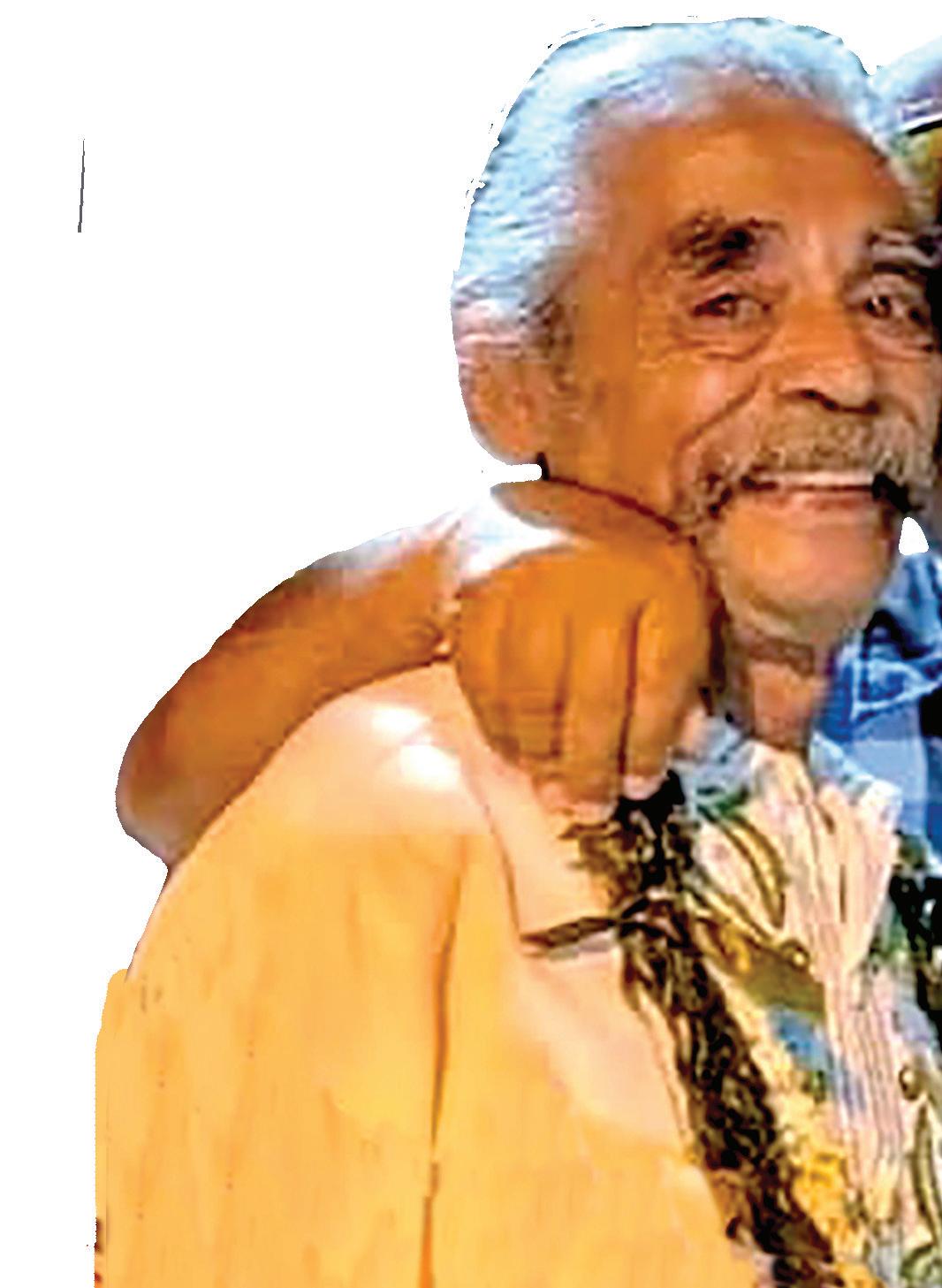
Many years ago, when the old Kaupō School building was in jeopardy of complete loss, Manny was head of the original restoration project, working every single weekend, taking a year to restore the building to safe use.
He was known for his helpfulness. He was the type of person that if asked for kōkua you could count on him to follow through and stick with it until the need was filled.
He referred to himself as a ‘jack of all trades and master of none.’ He was very skilled in all the basic needs. Whether it be mechanics or carpentry, plumbing or pruning, he could fix anything.
One of the many things missed is Manny’s unconditional love for everyone, his spontaneous jokes and laughter, and his deep wisdom of God through Christ Jesus.
Rest in Love forever Manuel Leroy Domen, born November 10, 1945, and passed away into Life February 18, 2022. A Kaupō legend.
Submitted by the Domen
‘Ohanancle Butch was born at Kula Sanatorium (also known as Kula Hospital) on February 18, 1957, when Hawaii was still a territory. He was the son of Joseph Nahale and Sadie Pi‘imauna. Uncle Butch was the 5th out of 9 children and probably the most kolohe. He attended Kaupō school until the 2nd grade and then Hāna school until he graduated in 1975.
After graduating he joined the National Guard and did infantry for 6 years. While in the National Guard he lived in Kaupō and worked different jobs. One of those jobs was working for Ala Akua Ranch as a wrangler. He would take care of the horses, saddle them and pack them to take tourist on trail rides up in the crater. Uncle Butch also trained horses and would help with the branding of cattle. He worked at Kula Lodge and on protea farms as well. He was a jack of all trades.
In 1990 he married his wife Kathy and began his 32-year career at the Four Seasons Resort, Uncle Butch worked in the landscaping department and was named employee of the month 2 times during his time at the hotel. Many employees have said how much they miss his presence there.
When Uncle Butch wasn’t working he loved to spend his time in Kaupō. He had so much knowledge of the land and ocean. He knew where to pick Maile, what trees had the best fruit, where the Heiau and Piko caves were; he knew where and when to hunt and fish, and where the best spots were to catch black crab and get ‘opihi. Uncle
Submitted by the Pi’imauna ‘OhanaButch knew the land like the back of his hand and had a deep love for Kaupō, the place he called home.

Uncle Butch was truly an exceptional Husband, Father, Papa, Brother, Uncle and Godfather. He loved his ‘Ohana and was always ready and willing to help if anyone needed. Although he’ll sorely be missed, he’ll also be remembered.

Whenever you see a beautiful Maui sunrise or the moon and stars shining brightly over the Kaupō Gap, that’s where he’ll be—forever in our hearts.
“This is my journey and it’s going to be interesting.” Mapuana Torres
Frances Kahalaomapuana Kanuha Torres peacefully transitioned to Heaven on Sunday, January 23, 2022 with her family at her side, in her home in Kahalu‘u with songs & pule.
Mapuana was born to Robert M. & Doris P. Kanuha Sr. on February 10, 1953 in Honolulu.
Along with her siblings, Clare, Kehau, Hilary, Bobby, Roland and Deanie she grew up in Palolo Valley; Palolo Housing to be exact. Mapuana was proud to say she “was raised in the housing.” Her childlike spirit built a strong foundation in her character that gave her such a Loving and Caring heart to serve God, her family, and her friends. She graduated from Kaimuki High School, Class of 1971, then went on to higher education, and then into the workforce.
In 1971, Mapuana met the love of her life, Harvey Torres. They were married on January 6, 1973, and started their family; Nelson Kalepa, Neldine Kahalaomapuana, Nelissa Kauilani and Nelden Kamakaliulani Torres. In their 49 years of marriage, Harvey and Mapuana were Blessed with 4 children and children in-laws, 13 grandchildren and their first great grandchild. Mapuana was the matriarch of her family who ensured everyone was
Aunty Mama as she is lovingly known to many of her nieces and nephews, is that special Aunty who will be greatly missed by all. She was very meticulous in keeping a clean and tidy home and enjoyed learning new things; even participating in marathons four times! She finished the Honolulu Marathons and the Great Aloha Run!
Mapuana was proud of her Hawaiian heritage with deep family roots, from Kahakuloa to Makena to Kaupō on the island of Maui. She enjoyed time spent with family on their ancestral lands that’s been in their family for many generations, in Naopu‘u, Kaupō, Maui. As a proud and humbled Hawaiian, she understood her kuleana and desired to stand with our Lāhui at Maunakea, so she went! She enjoyed her time on the Mauna with our Lāhui, attending lectures and participating in the daily protocols. Always open to learn.
Mapuana worked at various places, however, she started her career at the Hawaii State Hospital in the early 90’s, as the Account Clerk in the Business Office. She later transferred to the Medical Services Department as the Office Assistant and was promoted in 2019 to Administrative Assistant. Her responsibilities were to manage and provide support to the patients and doctors. Mapuana’s work was purposeful and fulfilling. She
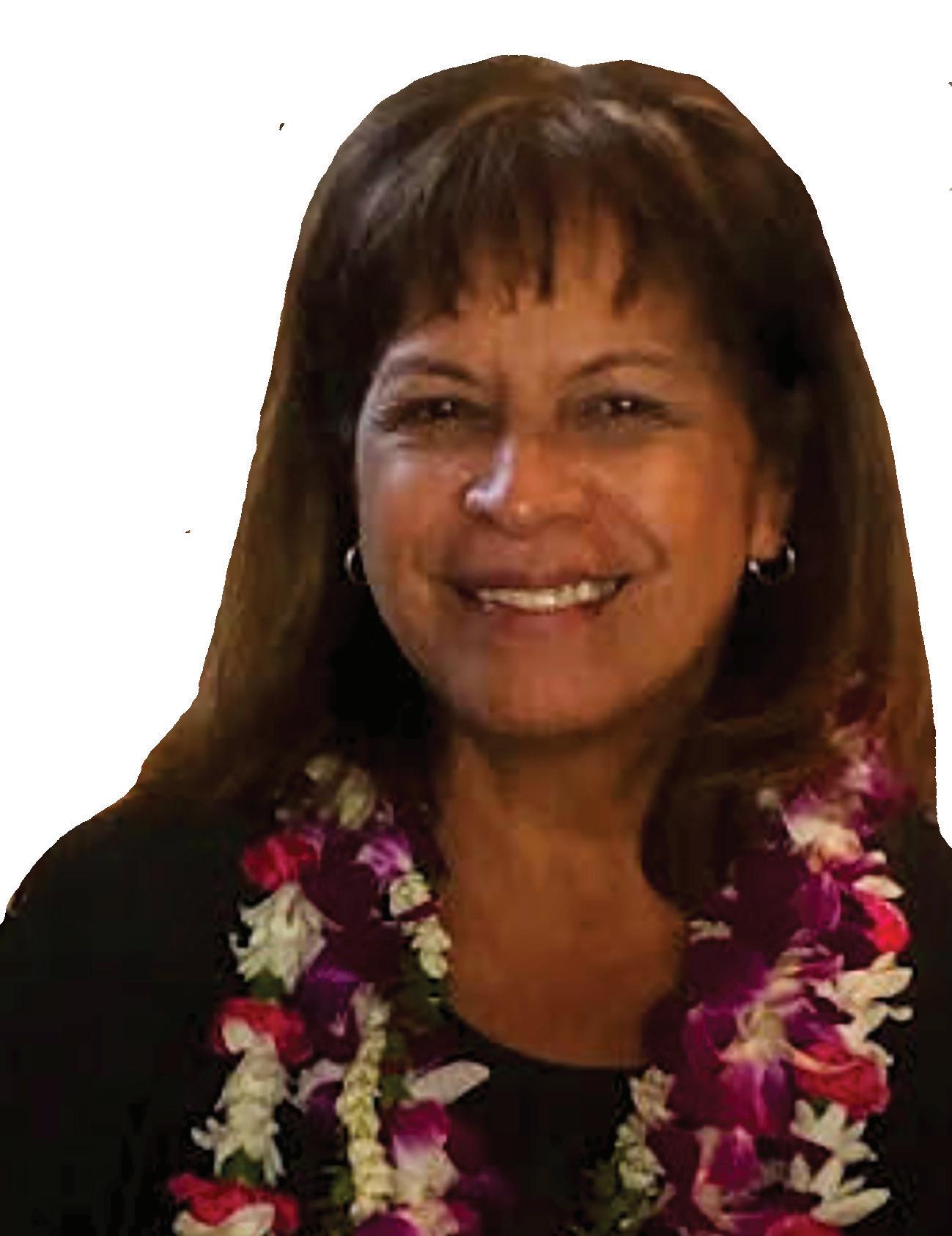
30 years of service at the Hawaii State Hospital, Mapuana retired in December 2021. Her plans were to move to Maui after retirement.
On April 9, 2021, Mapuana was diagnosed and began chemotherapy. During this time of her journey, Mapuana wrote many of her thoughts and feelings in her journal and BIBLE. Upon completing her last treatment, her diagnosis was the same, terminal.
In her last day’s on this side of GLORY, Mapuana’s FAITH in GOD gave her STRENGTH, COMFORT and PEACE. She embraced GOD’S GOODNESS and understood, healing doesn’t always happen on this side of GLORY. JESUS CHRIST is her LORD AND SAVIOR and HE received this beautiful ANGEL unto himself, Frances Kahalaomapuana Kanuha Torres on Sunday, January 23, 2022.
Submitted by the Kanuha ‘Ohana


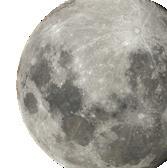


Representative Clark would like to highlight ways in which she can be contacted if anyone has any questions, ideas, or concerns.
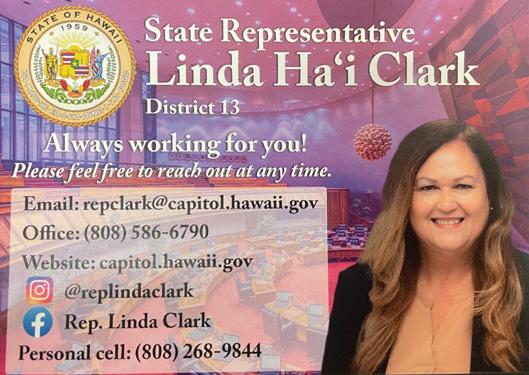
Representative Clark helped to secure $250,000.00 for the construction of the Hāna Health Rehabilitation and Support Center.
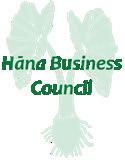
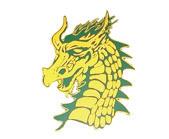


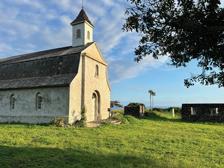
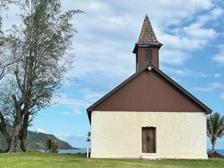
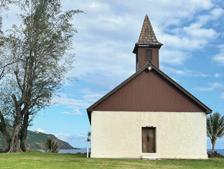

The Maui County Council will be engaging in their annual budget proceedings, beginning April 4th, 2022 to May 6th. The budget proceedings will review all of the individual county department budgets, like public works and police, fire, etc. All county residents are welcome to join our daily meetings and testify to funding allocations that may affect their communities, including Kaupō. The virtual meeting link will likely be https://bluejeans. com/441891331, and the calendar can be viewed at mauicounty.legistar.com, under the Budget, Finance and Economic Development committee (BFED).


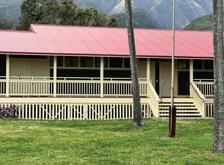


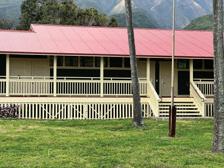


Maui County OED hosted a training workshop on how to complete grant applications for the year 2022-2023 with the County of Maui. Information can be found at mauicounty. gov/1787/OED-Grants.
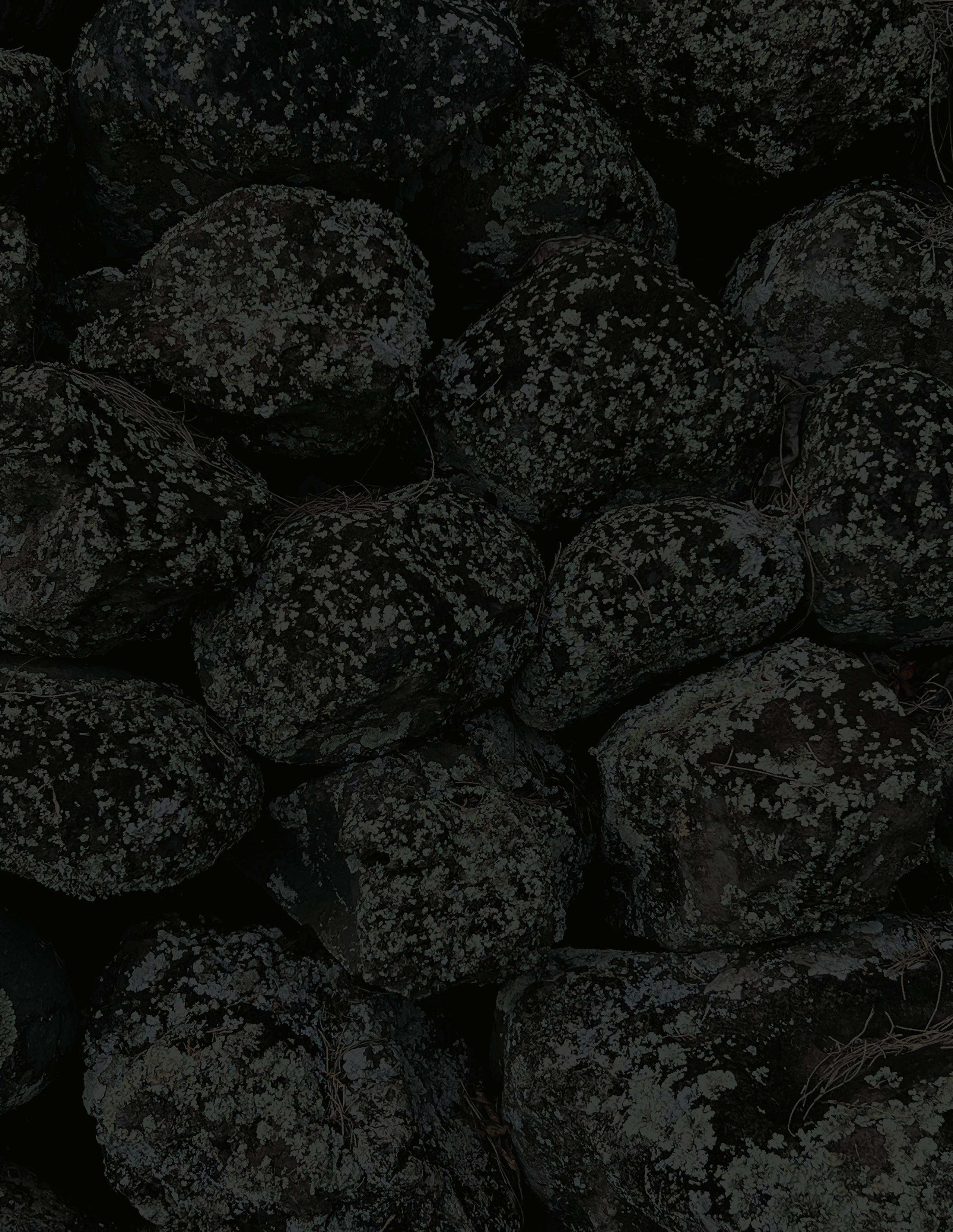
COMMUNITY ASSOCIATION
CONTACT INFORMATION FOR THIS PUBLICATION
Makalapua Kanuha mekananiaokaupo61@gmail.com


Kauwila Hanchett kauwila3@gmail.com
Kamalama Mick poaipili@gmail.com